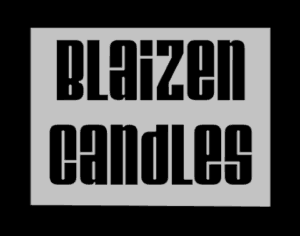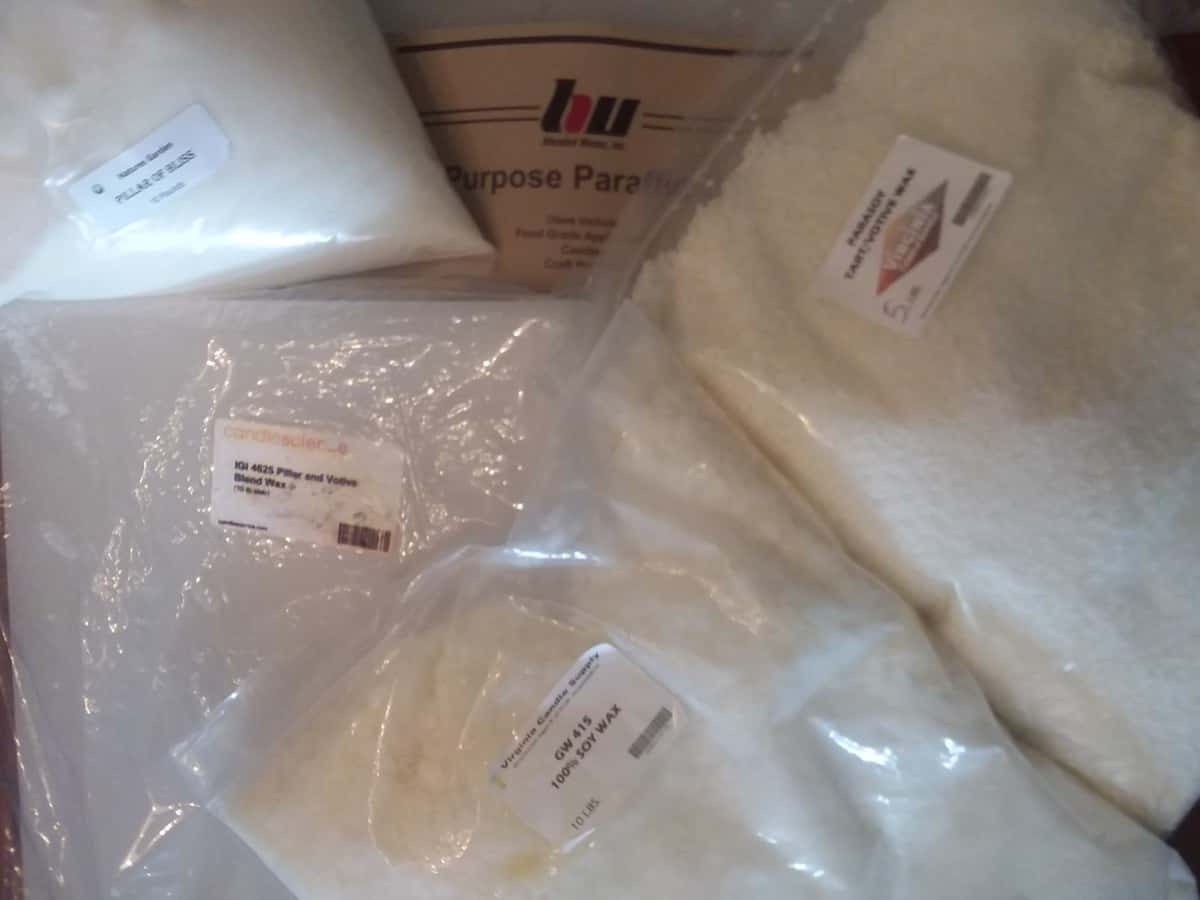After finishing my first candle-making kit and watching YouTube videos, I decided I wanted to try making more candles. I needed to order more wax, but quickly realized the options were endless! I did not know what to go for.
One thing I noticed was how people talked about these different waxes in letters and numbers. It seemed like a secret code or language to me: IGI 4625, GW 415, etc.
And nobody ever explained what type of wax it was (paraffin, soy, etc.) or what these numbers meant. It was like they just expected me to know what they were talking about and this just made me feel even more lost.
That’s why I wanted to write this article. I wanted to compile and present these candle wax basics in a beginner-friendly and easy-to-understand way.
What do the different letters and numbers in the candle wax name mean anyway? The letters in a candle wax name are the abbreviation of the manufacturer of the wax. The numbers are assigned by the company based on their own system, experimentation, etc. Waxes of similar type are usually numbered within a range, demonstrating the varying gradient of their properties or characteristics.
This is a list of some of the most common brand names, numbers, and types of waxes you may hear about as you are starting your candle-making journey.
Most Common Company Brand Names
There are some common manufacturers out there that you are going to see. I picked out just a few examples of waxes from four different companies.
Their products are sold online and at candle supply stores. Most candle suppliers will have waxes from at least one of these companies.
There are, of course, so many more brands of waxes out there and I could not possibly list them all here. I simply picked out a few that are more common and popular, whose name you will most likely see or hear and a few that I have ordered myself or am interested in.
I also included a table summary at the end of the article that includes all of the different types of waxes from these 4 manufacturers.
For reference, I used the CandleScience website, which is www.candlescience.com; the EAP Innovations website at www.eapinnovations.com; and the NorthStar Country Candle Co., LLC, website at www.northstar3c.com for additional information.
These 3 candle suppliers come from a list of over 101 candle suppliers I compiled to help you find a local supplier with pick-up or free shipping to reduce cost. You can find the “Candle Suppliers” article here.
I also looked at the website of the following companies listed below.
The International Group, Inc. (IGI)

The International Group, Inc. (IGI) manufactures a variety of paraffin wax and paraffin-soy blends. They are probably the most well-known manufacturer of paraffin and parasoy waxes. They also have a paraffin-coconut wax blend.
This is IGI; you may have seen that abbreviation before.
Their website is www.igiwax.com.
Blended Waxes, Inc. (BW)

Blended Waxes has both paraffin and soy wax. You will see wax with this brand name abbreviated as BW, plus a number. I first found this brand on Amazon, but now I see CandleScience and NorthStar carry it, too.
BW also offers beeswax, microcrystalline wax, and a variety of other blends.
Their website is www.blendedwaxes.com.
Golden Brands Wax (GW) by AAK

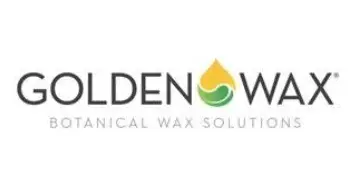
Golden Brands is made by the AAK company. They mostly make soy wax. You will see this brand name abbreviated as GW followed by the number.
Their website is www.aak.com.
Nature Wax by Cargill

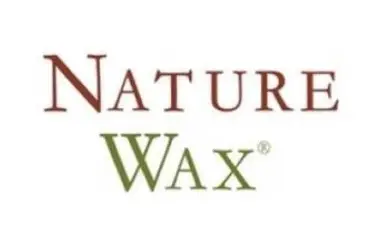
I haven’t used this brand at all and haven’t really heard much about them. Their brand name is NatureWax, made by Cargill, and their wax name is usually a C followed by a number.
They offer 3 waxes: a soy wax and two soy blends.
Their website is www.cargill.com.
Proprietary Blends
Whenever a company comes up with its own “recipe” for a wax, it is called a proprietary blend. Each of these examples listed in this article are proprietary blends, manufactured by its parent company.
There are many other smaller companies or candle suppliers that probably have their own proprietary blends. I know one example that comes to mind: Joy Wax from Nature’s Garden, which is a parasoy blend for container candles.
You have probably heard of it before. Of course, there are so many more companies and so many other types of wax that I cannot possibly go through all of them.
I chose these 18 that I listed here in this article, because these seem to be the most common waxes you will see and the ones you will probably hear about the most.
Wax Form
These waxes generally come in 5 different forms: hard slab, soft jelly, flakes, pastilles (pellets), and granules.
Slab
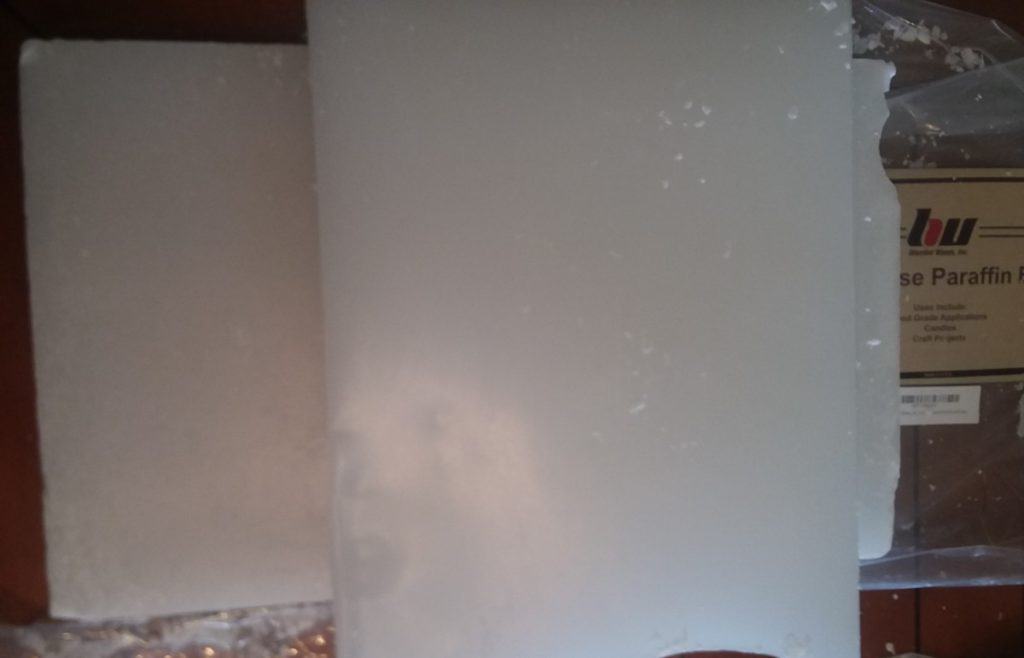
Slab basically means it is one big rectangular block.
You will have to break apart the slab into smaller pieces to melt your wax.
These usually come in 10-pound sizes, but Blended Waxes also makes theirs in 1 lb. blocks, which are sold on Amazon.
Jelly
There are only a couple of waxes that come in this soft, Vaseline-like texture. Its consistency is kind of like a gel wax.
It is in a flexible and moldable form in the bag. You can squish it around like a stress ball, putty, clay, or Play-Doh.
It is generally recommended that you wear gloves when working with these types of waxes, because it is sticky.
Flakes
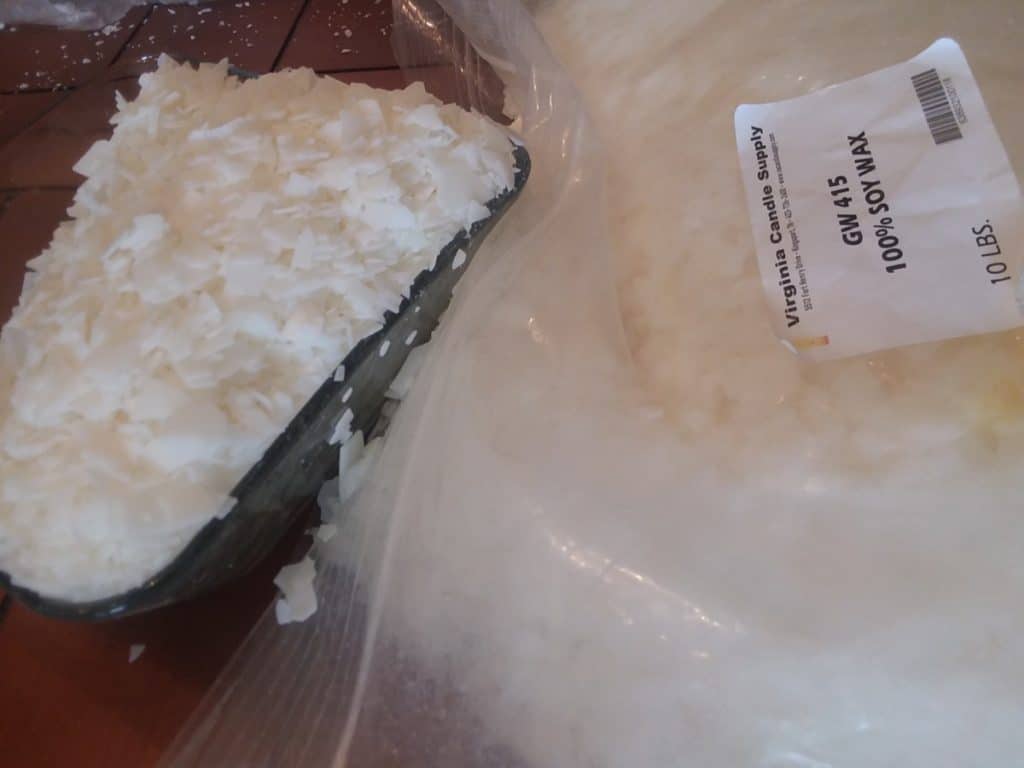
This is soft wax, generally soy wax. Just as the name suggests, they are thin flakes of wax, about an inch or less wide and a couple mm thick.
Pastilles and Granules
Pastilles (aka pellets) and granules are easier to work with than the slab form. They are already broken down into smaller pieces when manufactured and packaged into bags.
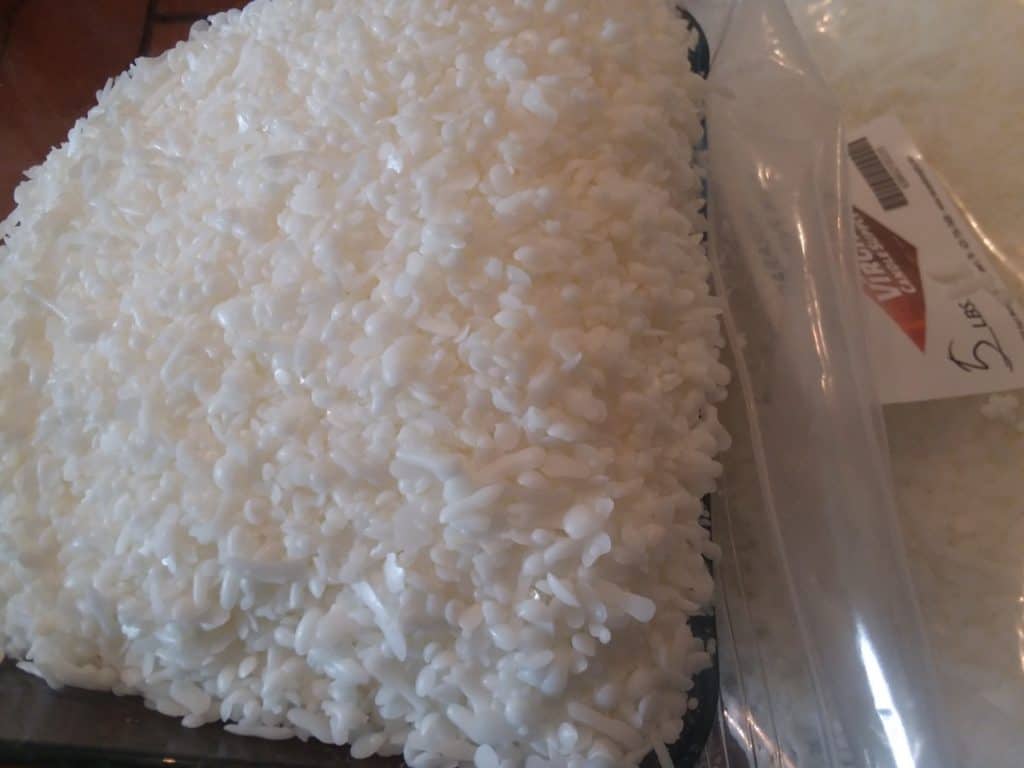
Pastilles, or pellets, are pea-sized or smaller wax pieces.
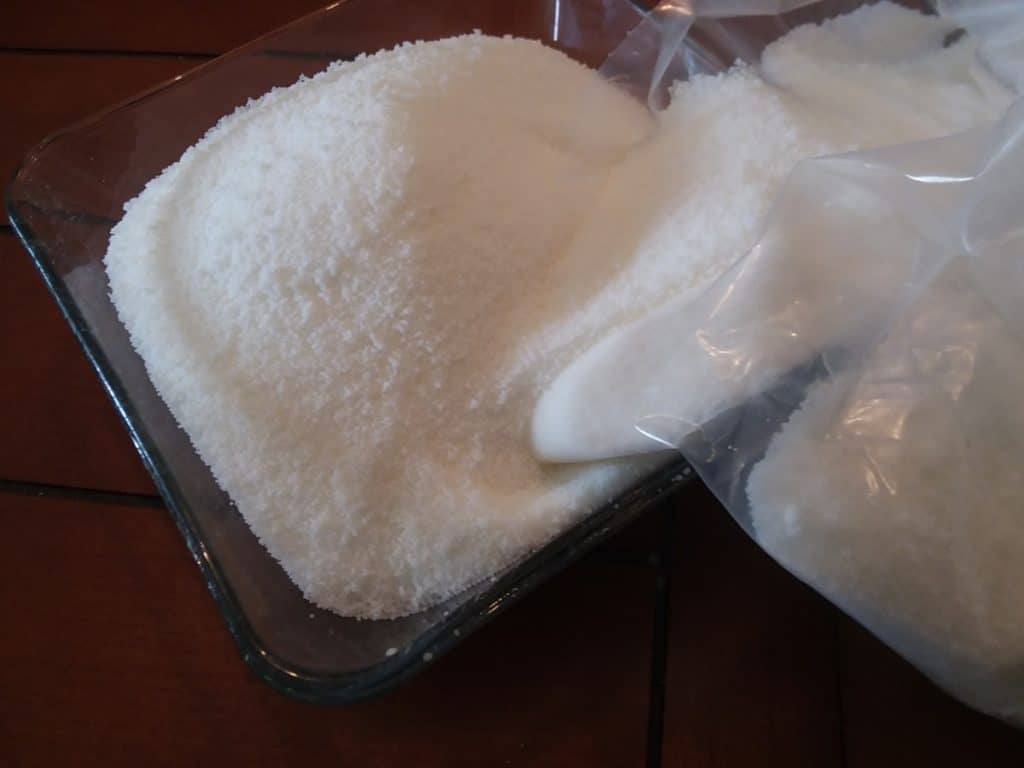
Granules are essentially grains of wax, which looks like and has the consistency of salt or sand.
Numbers
Okay, so let’s talk about the different types of wax and their “numbers.” Or as I mentioned earlier, the “secret code” or language of candle wax.
Each manufacturer assigns their own number to the wax. There is no universal code for what these numbers mean. This is based on each company’s own system, experimentation, etc.
So, each company is different. For example, a GW 415 (soy) is not equivalent to a BW 422 (paraffin).
However, within the same brand, the same types of waxes are generally going to have similar numbers that fall within a range, according to various properties.
For example, the GW brand ranges from 415-494, based on their melting points, fragrance loads, and additives (or lack thereof), etc. Keep in mind, however, that there are not waxes for every single number within that range.
So, although there is a GW 415 and 416, I don’t believe there is a GW 417. At least, I wasn’t able to find any information about it. This number may have been assigned by the company to an experimental wax that didn’t work out, so they scrapped the number.
BW has soy waxes, paraffin, parasoy, and other blends that range from 901-925 and paraffin waxes that range from 407-450.
BW also offers microcrystalline waxes (405-435) and beeswax (960-975), which I will not be discussing further in this article.
BW also has waxes with 4-digit numbers, which I have never seen sold by any candle supplier, but you could probably order directly from the manufacturer.
Some name brands and their numbers are more common than others. Therefore, if you hear the number, you should be able to identify the manufacturer.
IGI mostly uses 4-digit numbers in the 1200’s, 4600’s, or 6000’s.
Some companies may not assign a specific number to their proprietary blend. For example, Nature’s Garden doesn’t have a special letter code and number for Joy Wax. They just call it Joy Wax.
Paraffin vs. Soy and Their Blends
Paraffin wax generally has a better scent throw than soy and you can get darker, deeper, and richer colors with paraffin compared to soy. Colored soy wax generally turns out with more of a pastel shade and tends to frost when colored.
Paraffin wax is a harder wax compared to soy, so it is used for pillars, votives, and tapers (free-standing candles), whereas soy is a softer wax and used more for container candles.
Blends allow you to combine the best characteristics of both types of waxes to create a unique product.
One thing to keep in mind is that if a wax says it is 100% all-natural, that just means it is made of soy, coconut, beeswax, palm wax, or a blend of these waxes. These are all “natural” waxes.
If a wax is advertised as all-natural, then it should not have any paraffin wax in it. But 100% all-natural does not mean 100% soy, because there are other “natural” waxes, including palm, coconut, and beeswax.
Other Waxes
I am not going to be addressing beeswax, palm wax, coconut, or gel wax in this article. I will not be discussing waxes that are made of 100% of these components.
Although there are a few wax blends I will mention that have coconut or palm wax in it, I am only going to be focusing on soy and paraffin waxes, since they seem to be the most common. And it is what I have worked with so far and am more familiar with to date.
Now I’m going to go through and discuss 18 examples of waxes that are available by the 4 manufacturers I mentioned earlier. Not only am I stating the characteristics of the wax, but I’m also giving a candle supplier or distributor where this wax can be purchased online.
I’ll be referring you to CandleScience, Amazon, EAP Innovations, and NorthStar Country Candle Co. as the 4 suppliers where you can buy these wax products. I will include links to where you can buy each of these waxes in case you want to try them out, if you haven’t already.
I’ve included links directly to these products for purchase. However, Amazon doesn’t provide the wax number for Blended Waxes, Inc. in its description. So, I’m only going to include links to the “household-type” paraffin wax I’ve bought from them in the past.
You can get it in 1, 2, or 3 one-pound blocks or as a 10-pound slab.
Also, the Amazon description does not give the pouring temperature or fragrance load (%FL) of these Blended Waxes, but it will usually give the melting point. I was able to find some answers listed in the questions below the product description regarding fragrance load.
For example, the 10 lb. block of the “household paraffin” has a 5% FL. This appears to be the same type of “household paraffin wax” I first purchased in the 3 lb. format, so I assume it’s the same.
I could not possibly identify all of the different waxes that are out there. I’ve picked out a few examples of paraffin, soy, parasoy, and other blends that have either paraffin or soy in it. I’ve chosen the ones that are the most popular and well-known that you will most likely see and a few that I’ve ordered myself or found interesting.
PARAFFIN WAXES
I have 4 examples of IGI waxes.
IGI 4625
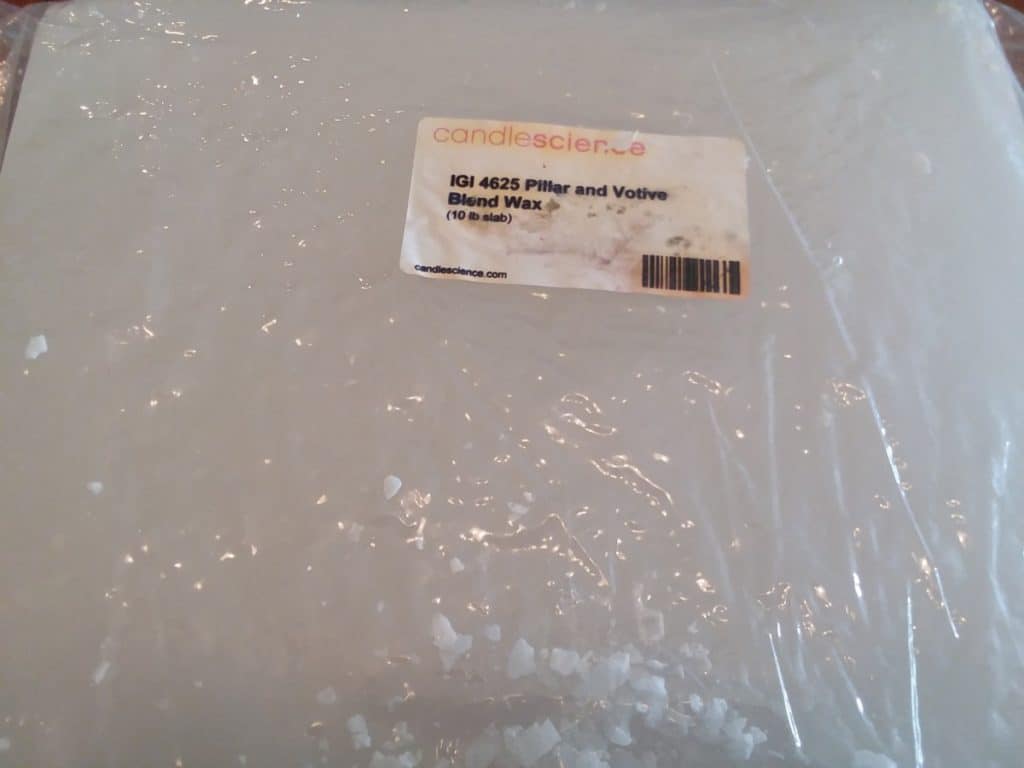
This is advertised as a Pillar and Votive Blend Wax. It is a paraffin wax in slab form. It is recommended for pillars, votives, and tarts. It has a smooth, opaque appearance. The maximum fragrance load for this wax is 6%. The melt point is 142°F. The pour temp. is 175-185°F.
| Company/Manufacturer: | The International Group, Inc. (IGI) |
| Wax Type: | Paraffin |
| Wax Form: | Slab |
| Candle Type: | Pillars, Votives, Wax Melts/Tarts |
| Appearance: | Smooth, opaque |
| Max. Frag. Load (%): | 6% |
| Melting Point (°F): | 142 °F |
| Pouring Temperature (°F): | 175-185 °F |
You can check the current price of a 10 lb. slab here on Amazon.
And CandleScience also has it here. They offer it as either a 10 lb. slab or a 40 lb. case.
IGI 4627
This is called a Comfort Blend Wax. It is a paraffin wax for containers and tealights. It has a smooth, opaque appearance with a very high maximum fragrance load at 12%. The melt point is 125°F. The pour temp. is 175-185°F.
This wax has a very unique consistency. It is a soft solid packaged in a bag. It has been described as having a Vaseline, or petroleum jelly, texture. (Paraffin wax is made from petroleum.)
Even though it comes in a bag, it can’t be easily poured out, like pastilles or pellets can. It is like a slab, but it is not a hard slab. It is recommended to wear gloves when handling the wax, because it is sticky.
| Manufacturer: | The International Group, Inc. (IGI) |
| Wax Type: | Paraffin |
| Wax Form: | Soft Jelly |
| Candle Type: | Containers and Tealights |
| Appearance: | Smooth, opaque |
| Max. Frag. Load (%): | 12% |
| Melting Point (°F): | 125 °F |
| Pouring Temperature (°F): | 175-185 °F |
CandleScience (CS) has it as either a 25 lb. bag or a 50 lb. case. Here is the link to the listing on CS.
IGI 4630
Harmony Blend Wax. This is a smooth semi-gloss, opaque paraffin wax for containers and tealights with a max frag load of 10%. It has a low melt point at 119 °F and the pour temp is 165-175 °F.
The IGI website says it is a single pour wax, up to 16 oz. container. This wax comes in slab form. It is proclaimed to be similar to the IGI 4627, only in slab form.
| Manufacturer: | The International Group, Inc. (IGI) |
| Wax Type: | Paraffin |
| Wax Form: | Slab |
| Candle Type: | Containers and tealights |
| Appearance: | Smooth, semi-gloss, opaque |
| Max. Frag. Load (%): | 10% |
| Melting Point (°F): | 119 °F |
| Pouring Temperature (°F): | 165-175 °F |
You can check the current price of a 10 lb. slab here on Amazon.
Here is the link to the listing on CandleScience. They offer it as either a 10 lb. slab or a 40 lb. case.
IGI 1239A
I don’t hear much about this one. It is a paraffin wax for pillars, votives, tarts, and used in “cut and carve” candles you may have seen videos of.
When I first saw candle carving, I was amazed by it and thought it would be cool to try it one day, but I think that is a long way off for me. Well, now I know what wax I will need to use to try it, if I ever get around to it.
This is a wax with a hard translucent, rustic appearance. This wax produces candles with a mottled appearance. It comes in slab form.
The max frag load is only 3%. The melt point is 138 °F and the pour temp is 180 °F.
| Manufacturer: | The International Group, Inc. (IGI) |
| Wax Type: | Paraffin |
| Wax Form: | Slab |
| Candle Type: | Pillars, Votives, Wax Melts/Tarts, Carved |
| Appearance: | Hard, translucent, rustic, mottled |
| Max. Frag. Load (%): | 3% |
| Melting Point (°F): | 138 °F |
| Pouring Temperature (°F): | 180 °F |
You can check the current price here on Amazon for a 10 lb. slab.
CandleScience has it – here’s the CS LINK. They offer it as a 10 lb. slab or a 40 lb. case.
SOY WAXES
GW has most of the waxes here. I have 7 examples listed below.
GW 415

This is 100% soy wax with no additives. It is designed and recommended specifically for use in containers and tealights.
It can be blended with other waxes. Used by itself in containers, it will usually have sinkholes and frosting (if colored), since it has no additives.
This wax comes in flake form. The maximum fragrance load for this wax is 10%. The melt point is 121-125°F. The recommended pour temp is 90-100°F.
| Brand Name/Manufacturer: | Golden Brands Wax by AAK |
| Wax Type: | Soy |
| Wax Form: | Flakes |
| Candle Type: | Containers and tealights |
| Max. Frag. Load (%): | 10% |
| Melting Point (°F): | 121-125 °F |
| Pouring Temperature (°F): | 90-100 °F |
You can get a 10-pound bag here on Amazon.
CandleScience offers it in 10-pound bags or 45-pound cases.
GW 444
This is a soy container and tealight wax with additives to reduce frosting. The max frag. load is 10%. It has a higher melt point than GW 464 at 119-125 °F. The recommended pour temp. is 130-140 °F. It comes in flake form.
| Brand Name/Manufacturer: | Golden Brands Wax by AAK |
| Wax Type: | Soy |
| Wax Form: | Flakes |
| Candle Type: | Containers and tealights |
| Max. Frag. Load (%): | 10% |
| Melting Point (°F): | 119-125 °F |
| Pouring Temperature (°F): | 130-140 °F |
Amazon offers this wax in many sizes from a variety of different suppliers. Virginia Candle Supply has a 5 lb. bag, a 10 lb. bag, and a 20-lb. bag they sell through Amazon.
CandleScience offers a 10-lb. bag and a 45-lb. case.
GW 464
This is another soy wax for containers and tealights with additives in flake form. It has a smooth and creamy appearance. The frag. load is 7-10%.
It has a low melt point between 113-120 °F. Therefore, the manufacturer warns to be careful in the summer, because this wax will melt easier than others.
The pour temp can range from 125-150 °F, depending on who you ask. CandleScience recommends a pour temp of 130-140 °F. EAP says pouring temp is 125-145, 145-150 °F.
| Brand Name/Manufacturer: | Golden Brands Wax by AAK |
| Wax Type: | Soy |
| Wax Form: | Flakes |
| Candle Type: | Containers and tealights |
| Fragrance Load (%): | 7-10% |
| Melting Point (°F): | 113-120 °F |
| Pouring Temperature (°F): | 125-150 °F |
Amazon – again there are different suppliers with different sizes available/offered: 5 lb. bag, 10 lb. bag
EAP Innovations has a 1-lb. sample you can purchase. You will get 10% off your purchase if you use my coupon code BLAIZE10.
CandleScience has many options for this wax: 1 lb, 5 lb, 10 lb, and 45 lb case.
NorthStar Country Candle Co. offers this in 2 lb, 5 lb, and 10 lb sizes with free shipping. They also have 50 lb sizes available.
GW 494
This is a melt and tart soy wax. It is 100% all-natural soy with additives.
Due to the high amount of additives in this wax, it is not recommended for wick candles and can only be used for wax melts and tarts. It won’t burn with a wick.
It comes in flake form. The max frag load is 12%. The melt point is 120-125 °F. The pour temp is 155-165 °F.
| Brand Name/Manufacturer: | Golden Brands Wax by AAK |
| Wax Type: | Soy |
| Wax Form: | Flakes |
| Candle Type: | Wax Melts and Tarts (no wicked candles) |
| Max. Frag. Load (%): | 12% |
| Melting Point (°F): | 120-125 °F |
| Pouring Temperature (°F): | 155-165 °F |
CandleScience appears to be the only one of my options that has it.
BW-921
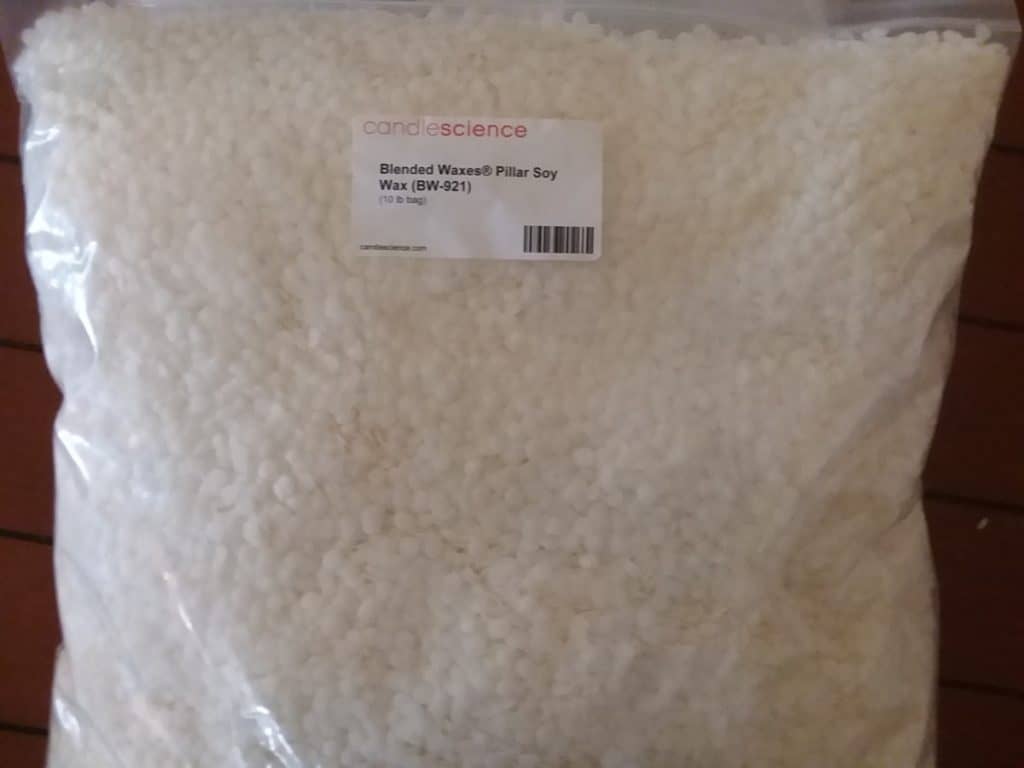
From Blended Waxes, Inc., this is advertised as a Pillar Soy Wax, an all-natural soy wax for pillars, votives, wax melts, and tarts.
You can get it in pastille form from CandleScience. The manufacturer also offers it in slab form.
It is off-white with a smooth and creamy appearance. The maximum fragrance load is 10%. The melt point is 135 °F. The pour temp is 170 °F.
I was excited when I found this on the CandleScience website, because I’ve been trying to create a really good pillar wax. I’ve been testing various parasoy blends, but this soy wax will be interesting to try, especially because it is 100% all-natural soy.
This is surprising to me that this could work as a pillar wax, because soy wax is a soft wax and everything I’ve read says that soy can’t be used as a pillar wax. So, we’ll see how this goes.
| Brand Name/Manufacturer: | Blended Waxes, Inc. |
| Wax Type: | Soy |
| Wax Form: | Pastille and Slab |
| Candle Type: | Pillars, Votives, Wax Melts/Tarts |
| Appearance: | Off-white, smooth, creamy |
| Max. Frag. Load (%): | 10% |
| Melting Point (°F): | 135 °F |
| Pouring Temperature (°F): | 170 °F |
CandleScience appears to be the only place where you can get this for now.
BW-922
This is an All-Natural Votive blend. 100% Natural – soy with natural waxes and oils, no paraffin. It is offered in slabs and pastilles by the manufacturer. It is off-white, with a smooth and creamy appearance, formulated for a high fragrance load.
The frag load is 8-10%. The melt point is 135 °F. The pouring temp is 150-170 °F, with a 2nd pour needed.
| Brand Name/Manufacturer: | Blended Waxes, Inc. |
| Wax Type: | Soy |
| Wax Form: | Pastille and Slab |
| Candle Type: | Votives |
| Appearance: | Off-white, smooth, creamy |
| Fragrance Load (%): | 8-10% |
| Melting Point (°F): | 135 °F |
| Pouring Temperature (°F): | 150-170 °F |
This seems to be very similar to the BW-921.
Northstar appears to be the only distributor for this one. Northstar has it in pastille form. They offer it in 2 lb, 5 lb, 10 lb, and 45 lb sizes, with free shipping for the 3 smallest sizes. Please check their website for their shipping policies.
C-3
This is the NatureWax brand soy wax from Cargill. It is recommended for containers, tealights, and tarts/melts. It comes in flake form. The fragrance load is 6-10%. The melting point is 125-127 °F.
It is suggested you melt to 160-200 °F and the pouring temp is anywhere between 120-180 °F, according to the Cargill website. CandleScience says a good pour temp is 155-165 °F.
| Brand Name/Manufacturer: | NatureWax by Cargill |
| Wax Type: | Soy |
| Wax Form: | Flakes |
| Candle Type: | Containers, Tealights, Wax Melts/Tarts |
| Fragrance Load (%): | 6-10% |
| Melting Point (°F): | 125-127 °F |
| Pouring Temperature (°F): | 120-180 °F |
Amazon has it in 1, 5, and 50 lb options.
EAP also has this in 1 lb, 10 lb, and a 50 lb case. You can get 10% off your purchase if you use my coupon code BLAIZE10.
Northstar also has it in 2 lb, 5 lb, 10 lb, and 50 lb options. NorthStar appears to offer free shipping for the 2, 5, and 10-pound sizes. Please check out their website for the shipping details.
CandleScience has discontinued NatureWax from their website and will no longer carry Cargill products, because they do not agree with their business practices.
If you would like to find out more about this and why CandleScience no longer recommends Cargill products, you can read the company’s statement here: https://support.candlescience.com/hc/en-us/articles/360045900034-Cargill-Product-Update.
PARASOY WAXES (Paraffin/Soy Blends)
These waxes are a combination of paraffin and soy in varying ratios. I have identified 3 waxes for this category.
The companies that create these waxes keep the exact ratios and additives a secret. Their proprietary blend is their own unique recipe, which I can understand they don’t want people to copy, because then they will lose business as the only manufacturer of that recipe. Or they will have people copying their recipe and trying to claim it as their own or pass it off as a product of the original creator.
IGI 6006
This is a paraffin-soy wax blend for container candles and tealights. It is fairly popular, so I’m sure you’ve heard of it. It comes in slab form. It has a smooth semi-gloss, opaque appearance. The max. frag. load is 10%. The melt point 133 °F. The pour temp 165-175 °F.
| Manufacturer: | The International Group, Inc. (IGI) |
| Wax Type: | Paraffin-Soy Blend (parasoy) |
| Candle Type: | Containers and tealights |
| Wax Form: | Slab |
| Appearance: | Smooth, semi-gloss, opaque |
| Max. Frag. Load (%): | 10% |
| Melting Point (°F): | 133 °F |
| Pouring Temperature (°F): | 165-175 °F |
Amazon has 5 lb and 10 lb options from Virginia Candle Supply (VCS).
EAP has a similar one they say that is a “chemical match” for IGI 6006 with 24% soy that is a soft wax not recommended for pillars. You can get it on Amazon, but if you purchase a 55-lb. case through my affiliate link and use my coupon code BLAIZE10 you can get an additional 10% off your order.
You can also get this wax from CandleScience.
IGI 6028
Paraffin/Soy Pillar Blend Wax. Appearance is opaque. Comes in slab form. It can be used for pillars, votives, tarts/wax melts. The max. frag. load is 6% for pillars and votives and 9% for tarts and wax melts. The melt point is 133 °F. The pour temp is 175-185 °F.
| Manufacturer: | The International Group, Inc. (IGI) |
| Wax Type: | Paraffin-Soy Blend (parasoy) |
| Candle Type: | Pillars, Votives, Wax Melts/Tarts |
| Wax Form: | Slab |
| Appearance: | Opaque |
| Max. Frag. Load (%): | 6-9% |
| Melting Point (°F): | 133 °F |
| Pouring Temperature (°F): | 175-185 °F |
You can get it from CandleScience.
BW-910
This is a paraffin-soy container blend. BW claims this wax is a single pour for container candles. It is manufactured in slabs. White with a soft, smooth appearance.
Fragrance load is 8-10%. Melt point is 120 °F. Pour temp is 150-170 °F.
Northstar says it is comparable to IGI 6006 and they recommend you preheat your jars.
| Brand Name/Manufacturer: | Blended Waxes, Inc. |
| Wax Type: | Paraffin-Soy Blend (parasoy) |
| Candle Type: | Containers |
| Wax Form: | Slab |
| Appearance: | White, soft, smooth |
| Max. Frag. Load (%): | 8-10% |
| Melting Point (°F): | 120 °F |
| Pouring Temperature (°F): | 150-170 °F |
Northstar appears to be the only one that sells it. They offer it in a 2-pound size with free shipping, 22-pounds, and a 45-pound case. Please review their website for their shipping policies.
Other Wax Blends
I have 4 examples here of various wax blends that contain soy, paraffin, coconut, or palm wax.
IGI 6046
This is a coconut/paraffin blend for containers and tealights. It has a smooth, opaque appearance with a low melt point. It has a soft texture, packaged in a bag, similar to the Vaseline-like consistency of the IGI 4627.
Max frag is 10%. Melt point is 120 °F. Pour temp is 170-180 °F.
| Manufacturer: | The International Group, Inc. (IGI) |
| Wax Type: | Coconut-Paraffin Blend |
| Candle Type: | Containers and tealights |
| Wax Form: | Soft Jelly |
| Appearance: | Smooth, opaque |
| Max. Frag. Load (%): | 10% |
| Melting Point (°F): | 120 °F |
| Pouring Temperature (°F): | 170-180 °F |
CandleScience appears to be the only one to carry it. This wax was previously named IGI 6570. CandleScience says the wax is soft enough that it can be sliced “like a block of soft cheese.”
From the CandleScience website: “After manufacturing, the liquid wax is filled directly into a thick plastic bag and then cooled before sealing the bag.” It is recommended you wear gloves when handling the wax.
CandleScience offers it in 25-lb and 50-lb options.
BW-923
BW-923 is a soy/palm/coconut blend for wax melts and tarts. It is all-natural wax that will not burn with a wick. It is not designed for burning in wicked candles and this can only be used for wickless applications only.
This comes in slab and pastille form. It is off-white with a smooth and creamy appearance.
It has a high fragrance load up to 15%, which is the highest FL I think I’ve ever seen. The melting point is 125°F. The pouring temperature is 170-180°F.
| Brand Name/Manufacturer: | Blended Waxes, Inc. |
| Wax Type: | Soy/Palm/Coconut Blend |
| Candle Type: | Wax Melts and Tarts |
| Wax Form: | Slab and pastille |
| Appearance: | Off-white, smooth, creamy |
| Max. Frag. Load (%): | 15% |
| Melting Point (°F): | 125 °F |
| Pouring Temperature (°F): | 170-180 °F |
Northstar Country Candle Co., LLC, has this wax in pastille form. You can find it here in 2 lb, 5 lb, 10 lb, and 45 lb sizes. NorthStar offers free shipping for the 3 smaller sizes. Please review their shipping policies on their website.
C-1
Cargill has a NatureWax C-1 wax, which is a 100% natural wax, composed of a blend of soy wax and palm wax. This wax is recommended for containers, tealights, and tarts/melts.
The max frag load is 10%. Melting point is 125 °F. Cargill recommends you heat the wax to 160-200 °F before adding your dye and fragrance and pour between 110-135 °F for container candles (from the Cargill website).
There should be minimal sinking upon cooling of the wax.
| Brand Name/Manufacturer: | NatureWax by Cargill |
| Wax Type: | Soy and Palm Wax Blend |
| Wax Form: | Flakes |
| Candle Type: | Containers, Tealights, Wax Melts/Tarts |
| Max. Frag. Load (%): | 10% |
| Melting Point (°F): | 125 °F |
| Pouring Temperature (°F): | 110-135 °F |
EAP also has this in 1 lb, 10 lb, and a 50 lb. case. If you use my coupon code BLAIZE10, you will get 10% off your order.
Although I got some of this information from the CandleScience website, CS does not sell Cargill products anymore.
C-6
This is a soy/coconut blend for container candles, tealights, and tarts/melts. It is manufactured in slab form.
The fragrance load range is 6-10%. The melting point is 125-127°F. Cargill recommends you melt to 160-200 °F with a pouring temp between 120-180 °F (from the Cargill website). Candlescience had stated their pour temp was 170-180 °F.
| Brand Name/Manufacturer: | NatureWax by Cargill |
| Wax Type: | Soy/Coconut Blend |
| Candle Type: | Containers, Tealights, Wax Melts/Tarts |
| Wax Form: | Slab |
| Frag. Load (%): | 6-10% |
| Melting Point (°F): | 125-127 °F |
| Pouring Temperature (°F): | 120-180 °F |
CandleScience stopped carrying Cargill products due to sustainability concerns and questionable sourcing practices.
EAP Innovations does sell it in a 50 lb. case. If you use my coupon code BLAIZE10 you will get 10% off your order.
And Amazon sells it in 5 lb and 10 lb sizes from VCS.
Other Candle Suppliers
Many candle suppliers sell their products on Amazon, as well as their own website. So, some of the Amazon product links I included were listings being sold by an independent candle supplier, such as Virginia Candle Supply (and others), and not the actual manufacturer of the wax.
While researching this article, I did find another candle supplier that was not included on my list of 101 Candle Suppliers: SouthWest Wax in NY.
SouthWest Wax, LLC
210 Commons Road
Utica, NY 13502
Phone: 1-866-799-2950, (847) 221-3553, or (315) 798-9065
Fax: (315) 797-4848
Email: orders@southwestwax.com, sales@southwestwax.com, or they have a contact form on their website
Website: www.southwestwax.com
They carry BW products. It appears you can’t order directly from their website. You have to contact them directly.
It appears they deal in bulk orders and wholesale. You can order in bulk up to 200 pounds or more. It looks like you have to fill out an application to become a customer.
It appears they have other locations, as well, which I’m not going to list. You can check out their website for more info.
I also realized that I had left Blended Waxes, Inc. off my Candle Supplier list, as well. So, I will be including/adding them, too.
Blended Waxes Inc.
1512 S. Main St.
Oshkosh, WI 54902
Phone: (920) 245-8035
Fax: (920) 236-8085
Email: info@blendedwaxes.com
Website: www.blendedwaxes.com
BW has many other products, but I did not go through them in depth in this article, because they do not appear to be all that common and I couldn’t find them easily on the most popular or common candle supplier websites.
I did include them in the table summary below.
I also found some BW products on the SouthWest Wax website. That’s how I discovered this new candle supplier: looking for BW products.
You can order sample sizes of their paraffin waxes directly from the BW website at https://blendedwaxes.com/product/wax-sample.
I will also be adding Blended Waxes to my Candle Suppliers list.
I have updated my “Candle Suppliers” article if you want to check it out.
Table Summary
Hopefully you found this article helpful with the way I explained the different types of waxes and how I broke down the most common brand names you will most likely see.
I created a table summarizing all of the different types of wax I found from these 4 manufacturers I discussed.
I did not feel it was necessary to go through and break down the properties of all of these waxes. If you are interested, you can find more information about all of these waxes through a quick Google search.
| Wax Name | Wax Type | Wax Form | Candle Type |
| IGI 1230 | Paraffin | Slab | Containers |
| IGI 1239A | Paraffin | Slab | Pillars, Votives, Wax Melts/Tarts |
| IGI 1240 | Paraffin | Slab | Pillars, Votives, Wax Melts/Tarts |
| IGI 1250 | Paraffin | Slab | Pillars, Votives, Wax Melts/Tarts |
| IGI 1260 | Paraffin | Slab | Embeds and Hurricanes |
| IGI 4625 | Paraffin | Slab | Pillars, Votives, Wax Melts/Tarts |
| IGI 4627 | Paraffin | Jelly | Containers and Tealights |
| IGI 4630 | Paraffin | Slab | Containers and Tealights |
| IGI 4633 | Paraffin | Slab | Containers and Tealights |
| IGI 4636 | Paraffin | Slab | Containers |
| IGI 4641 | Paraffin | Granules | Embeds and Votives |
| IGI 4642 | Paraffin | Slab | Containers |
| IGI 4826 | Paraffin | Slab | Wax Melts/Tarts |
| IGI 6006 | Parasoy | Slab | Containers and Tealights |
| IGI 6028 | Parasoy | Slab | Pillars, Votives, Wax Melts/Tarts |
| IGI 6046 | Coconut-Paraffin | Jelly | Containers and Tealights |
| GW 415 | Soy | Flakes | Containers and Tealights |
| GW 416 | Soy | Flakes | Wax Melts/Tarts |
| GW 444 | Soy | Flakes | Containers and Tealights |
| GW 464 | Soy | Flakes | Containers and Tealights |
| GW 494 | Soy | Flakes | Wax Melts/Tarts |
| BW-405, 408, 429, 430, 431, 435 | Microcrystalline | Unknown | BW Website doesn’t say |
| BW-407, 422, 433, 436, 439, 450, 1290, 1330, 1400 | Paraffin | Unknown | BW website doesn’t say. SouthWest Wax website says 407 is for votives and 422 is for pillars and votives. |
| BW-901, 905 | Soy | Unknown | BW Website doesn’t say |
| BW-902A | Unknown | Unknown | SouthWest Wax says it’s for votives. |
| BW-910 | Parasoy | Slab | Containers |
| BW-911 | Paraffin-Petroleum Based Wax Blend | Slab, Pastilles | Pillars |
| BW-914 | Unknown | Unknown | SouthWest Wax says it’s for pillars |
| BW-917 | Soy-Coconut-Beeswax | Slab, Pastilles | Containers |
| BW-918 | Paraffin-Petroleum Based Wax Blend | Slab, Pastilles | Votives |
| BW-919 | Parasoy | Slab, Pastilles | Wax Melts/Tarts |
| BW-921 | Soy | Slab, Pastilles | Pillars, Votives, Wax Melts/Tarts |
| BW-922 | Soy | Slab, Pastilles | Votives |
| BW-923 | Soy-Palm-Coconut | Slab, Pastilles | Wax Melts/Tarts |
| BW-925 | Unknown | Unknown | SouthWest Wax says containers |
| BW-960, 965, 970, 975 | Beeswax | Unknown | BW Website doesn’t say |
| C-1 | Soy-Palm | Flakes | Containers, Tealights, Wax Melts/Tarts |
| C-3 | Soy | Flakes | Containers, Tealights, Wax Melts/Tarts |
| C-6 | Soy-Coconut | Slab | Containers, Tealights, Wax Melts/Tarts |
